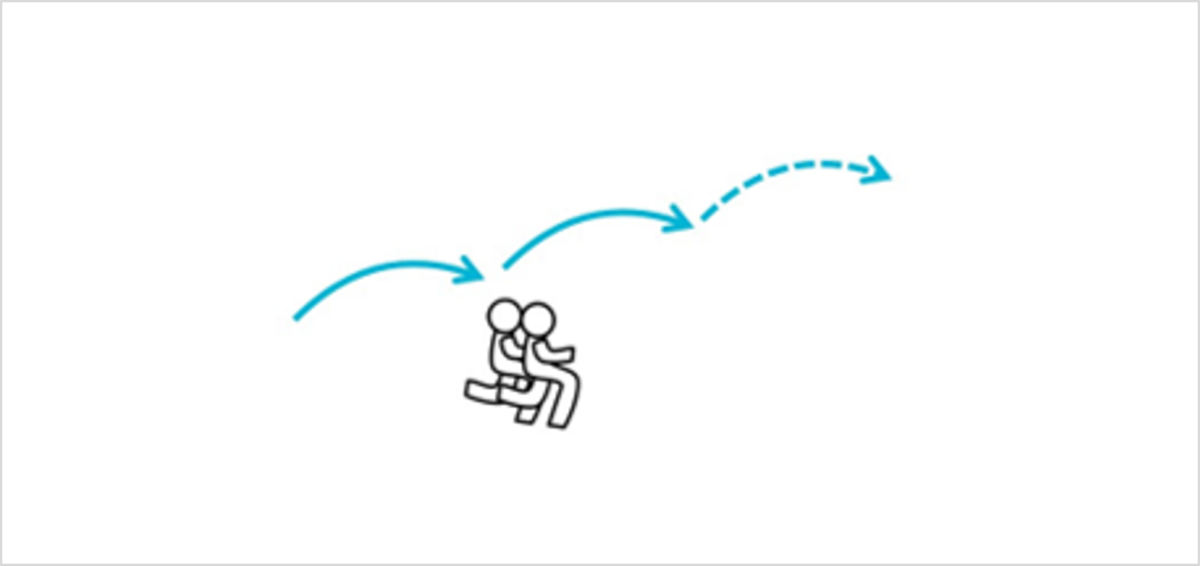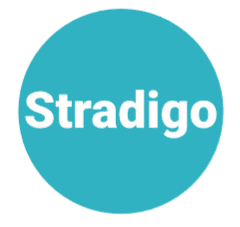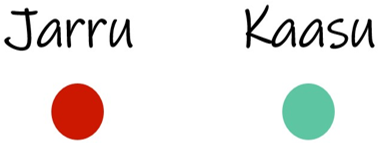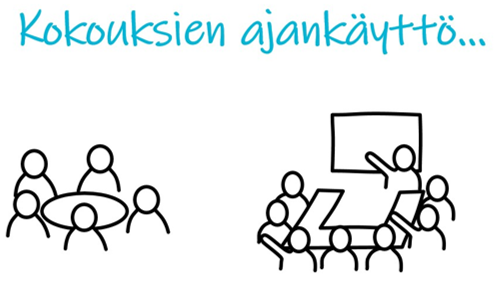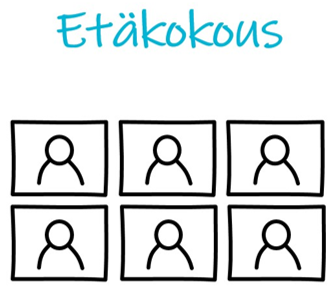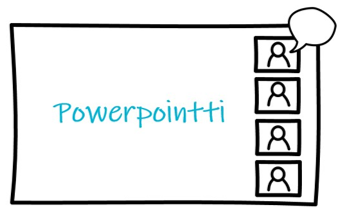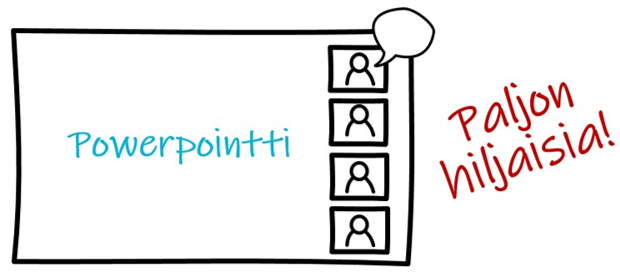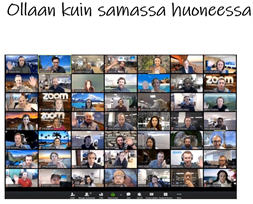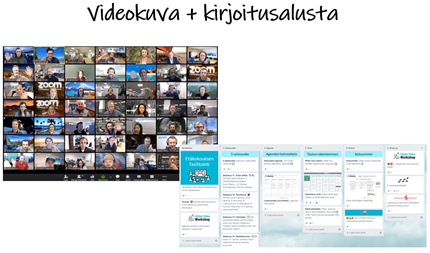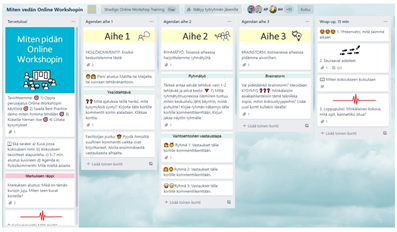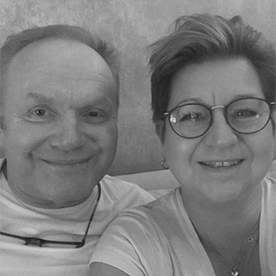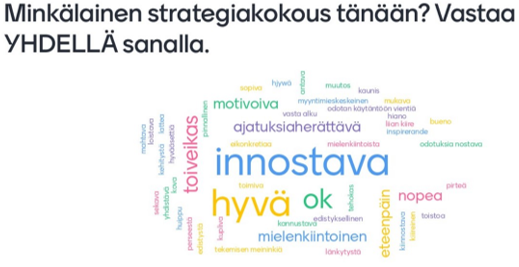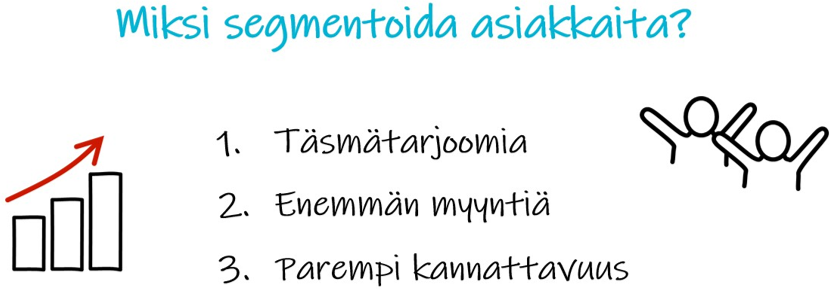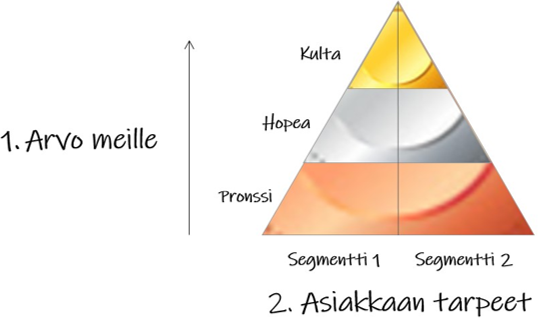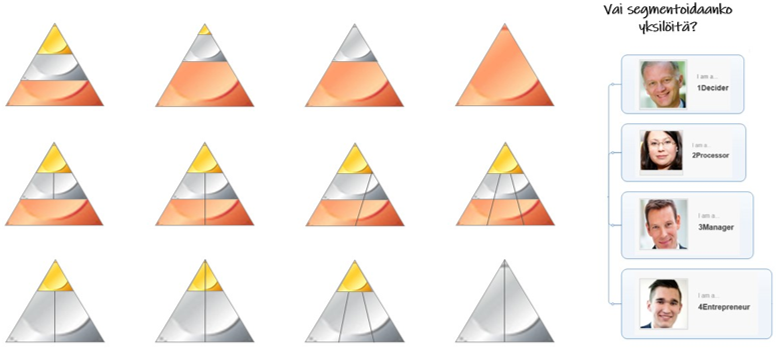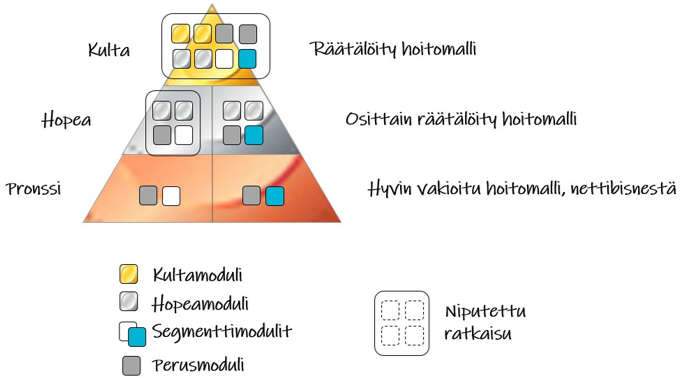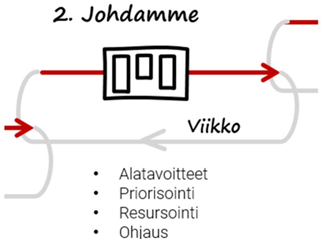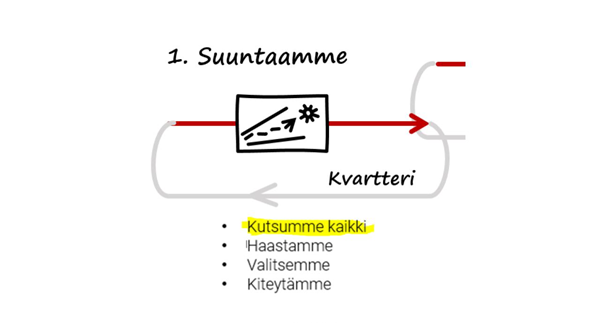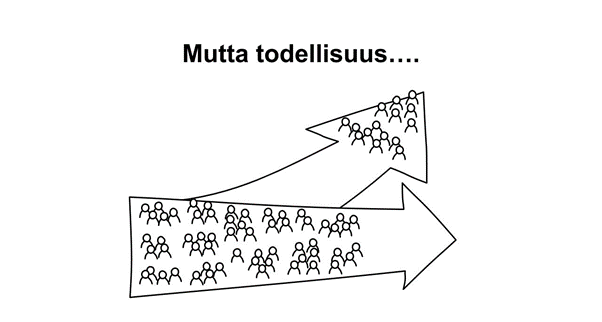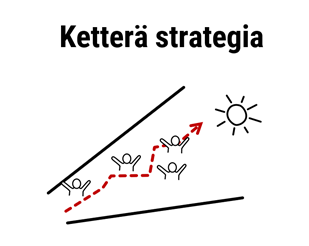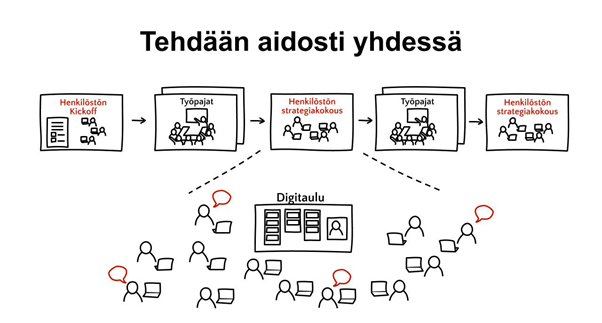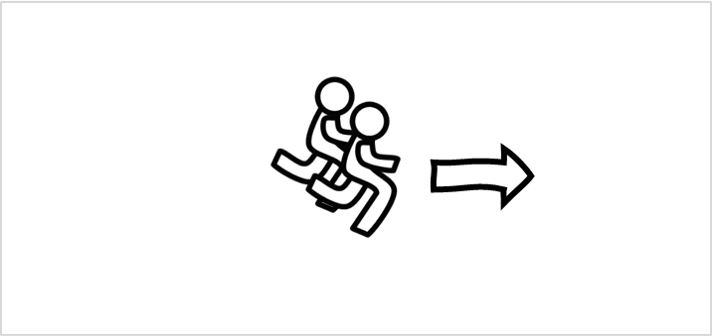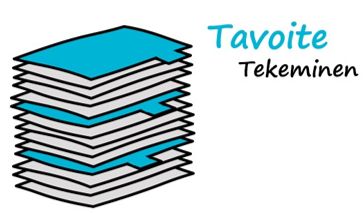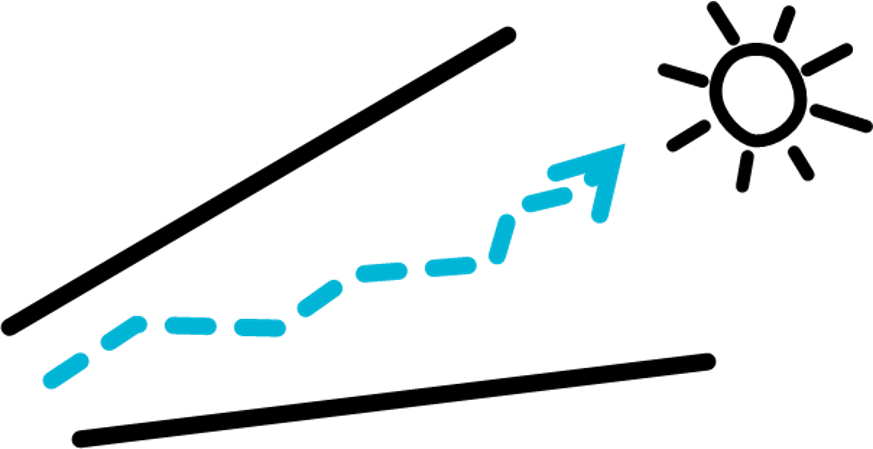Hallitusraportti: Horisontit – helikopterinäkymä bisnekseen 🚁
Toimitusjohtaja joutuu usein pitämään hallitukselle esityksiä, myös silloin kun strategia näytetään hallitukselle. Miten hän kertoo hallitukselle liiketoiminnan horisonteista? Tämän esityksen voi esittää johtoryhmän lisäksi koko yritykselle. Tämä on helikopterinäkymä bisnekseen.

Liiketoiminnan horisontit
Periaate on hyvin yksinkertainen: Kun elämme tässä liiketoiminnassa, katsomme minkälaisia hyppyjä teemme. Näitä hyppyjä kutsumme horisonteiksi. Olemme tässä tänään ja meillä on menneisyytemme. Tulevaisuudessa on hyvin usvaista, mutta sinne voi kuitenkin laittaa tavoitteita. Sen avulla voimme nähdä liiketoiminnan horisontteja.
Se mikä tekee tästä todella kiinnostavaa on se, että hyvin harvoin arjen strategiatyössä nousemme ylös helikopterinäkymälle. Emme näe isoja aaltoja, vaan näemme enemmänkin sälää. Kun saat tämän kiteytettyä, näet jotain mikä voi auttaa tekemään parempia päätöksiä.

Tämä alkaa siten, että katsotaan ensin taaksepäin. Lopputuloksena on yksi PowerPoint slaidi, jossa on liiketoiminnan horisontit. Tehdään yksinkertainen lista noin kymmenestä tärkeimmästä asiasta, jotka tapahtuivat viime vuonna. Viisi asiaa saattaa riittää, koska usein ongelma on, että niitä tulee liikaa.
Mitä haluttaisiin tehdä tänä vuonna?

Seuraavassa vaiheessa kirjataan mitä tänä vuonna tapahtuu, ja ehkä jotain suunnitelmia jo seuraavalle vuodelle. Yhtäkkiä sinulla on kartta, jossa näkyy bisneksen suuret “jumpit”, kuten näitä välillä kutsumme.
Nyt olemme saaneet isot tavoitteet tehtyä. On helppoa kirjoittaa pitkä lista, mutta ydinasian lyhentäminen vaatii vähän ponnistusta.
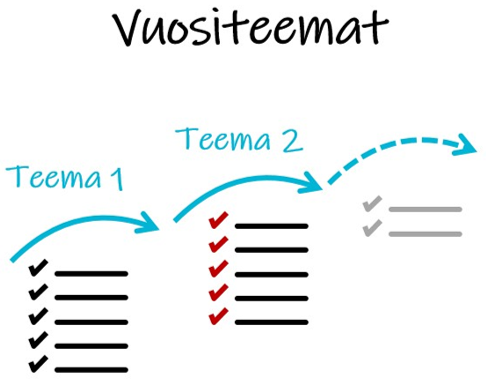
Vuositeemat
Seuraava askel on se, että annetaan vuodelle vuositeema ja kirjoitetaan se slaidin yläpuolelle.
Tehdään sama seuraavalle ja sitä seuraavalle vuodelle. Kun tätä on harjoittanut muutaman vuoden, niin aika hienoja juttuja alkaa näkyä.
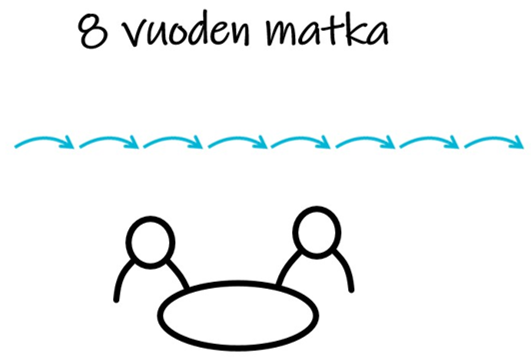
Paras keissini on tällainen, missä olemme miljardiyrityksen kanssa tehneet “jumppeja” kahdeksan vuotta. Kun viimeksi teimme kahdeksannen jumpin, alkoi tulla olo että niitä on niin paljon, etteivät ne edes mahdu kuvaan.
Jos tämän kuvan näyttää hallitukselle, mitä itse ajattelisit hallituksen jäsenenä tällaisen sarjan nähdessäsi? Voi olla, että sinulle tulee ajatus, että ehkä tämä toimari on ollut täällä töissä vähän liian kauan. Pitäisikö lähteä vaihtamaan? Toimari voi olla täysin suvereeni työssään, mutta silti tällainen ajatus voi tulla.
Liiketoiminnan kahden vuoden horisontit

Ehdotin toimarille, että mitä jos tehtäisiin kahden vuoden horisontit, jotta “jumppeja” olisikin vain neljä? Taas listasta tehtiin lyhyempi. Kun katsoimme taaksepäin, oli helpompi nähdä ne isoimmat jutut.
Nyt kun tehtiin kahden vuoden horisontit, se ei näyttänytkään enää niin pahalta slaidilla.
Minulla on slogan: Tärkeintä ei ole miten asiat ovat, vaan miltä ne näyttävät.
Tästä tuli hyvin kiteytetty asia. Tietenkin samalla lailla laitettiin kahden vuoden teemat.
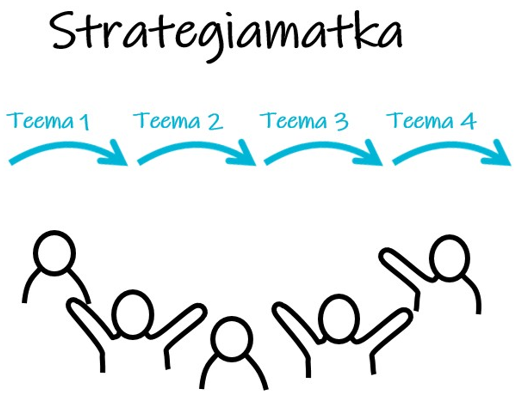
Kun tätä lähdettiin esittämään omalle johtoryhmälle, arvatkaa mikä oli reaktio? Se auttoi kaikkia ymmärtämään tätä asiaa. Itse asiassa, tähän tuli valtavan hieno logiikka.
Joskus olen vitsaillut, että parhaimmat strategiat kirjoitetaan jälkikäteen. Kun taaksepäin katsoo, tämä on ollut luotisuora juna, vaikkei se sitä oikeasti ollut. Oikeastaan aikamoinen sisäinen innostus syntyi ryhmän sisällä, että onhan tämä meidän juttumme aika makea homma!
Me emme Suomessa oikein osaa hehkuttaa kuten Ruotsissa. Ruotsalaiset osaavat käyttää superlatiiveja. Meillä paras superlatiivi on “Ei pöllömpi”, tai “Ei paskempi”. Meidän pitäisi osata hehkuttaa strategiamatkojamme!
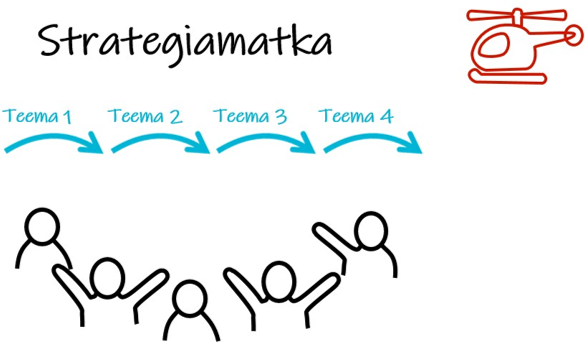
Helikopterinäkymä toimintaan
Mitä tässä tapahtuu on se, että sekä johtoryhmälle että hallitukselle aukeaa helikopterinäkymä koko toimintaan. Se auttaa näkemään minkälainen kunnianhimo pitäisi olla seuraavassa “jumpissa”.
Kun laitat todellisuuden ihmisen eteen kiteytetyssä muodossa, siitä osaa paremmin nähdä koko jutun.
Olen monesti maininnut Kuwaitin sodan kenraali Schwarzkopfin ja hänen kertomuksensa helikopteritasosta. Jos olet dyyneillä ja kohtaat vihollisia, pystyt tekemään hyviä päätöksiä. Mutta, jos nouset ylös helikopteritasolle, niin silloin todella näet mitä pitää tehdä. Tämä on täysin sama juttu.
Kun esitys on näytetty hallitukselle ja siitä on saatu palautetta, niin tietenkin se näytetään sen jälkeen myös omalle porukalle. Ja se on ihan selvää mitä siitä seuraa.
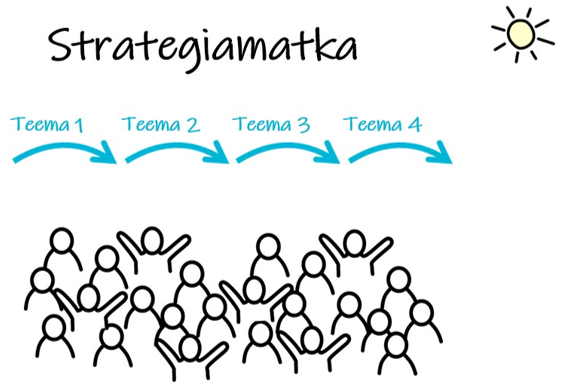
Porukka alkaa olemaan ylpeä tästä matkastaan, ja yhtäkkiä muistavat kaiken mitä ollaan tehty.
Uudet työntekijät huomaavat valtavan hienosti ymmärtävänsä tätä polkua.
Eli strategiamatkasta tulee totta! Se ei ole vain faktaa, vaan myös totta. Silloin näkyy SUURI TEHTÄVÄMME, konkreettisesti. Kuinka olemme vieneet ja toteuttaneet fantastisen hienoa purposea.
Laita strategia tulille rakentamalla liiketoiminnan horisontit!🔥
👉 Jos haluat pysyä ajan tasalla uusimmista keisseistä ja ahaa-elämyksistä, liity Johdon VIP-listalle!
Viimeaikaisia blogeja
Markus Westerlund on Rdigon perustaja ja strategiakonsultti. Hän on 25 vuoden aikana fasilitoinut toistasataa strategiaprosessia, ensiksi asiakkuusstrategioita vuosina 1996-2007 Vectia Oy:n toimitusjohtajana ja vuodesta 2007 liiketoimintastrategioita Rdigossa. Corporate uransa hän teki Nokian palveluksessa ensin tietoliikennepuolella ja sitten IT puolella Nokia/ICL Datassa. Markus on DI.
Rdigo on senioripartnerien strategia boutique. Erikoisuutena on laajasti osallistava strategiaprosessi tehokasta digifasilitointia hyödyntäen, nykyajatusten voimakas haastaminen, strategian yksinkertaistaminen ja ketterä strategian implementointi.
